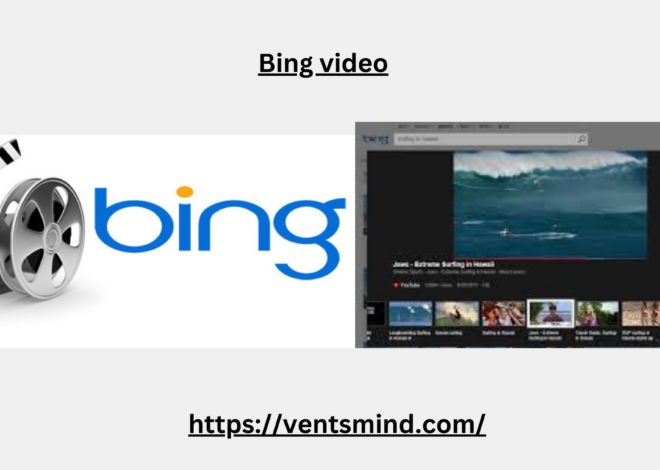
The Rise of tech magazine best information 2024 : Bridging the Gap Between Innovation and the Everyday Consumer
Introduction
In an era where tech magazine evolves at a breakneck pace, staying updated on the latest advancements is crucial for both enthusiasts and professionals. Technology magazines, once niche publications catering to a small audience of tech aficionados, have grown into essential resources that bridge the gap between complex innovations and the everyday consumer. These magazines, both in print and digital formats, serve as a conduit through which the latest developments in technology are communicated to the masses. This article explores the rise of technology magazines, their role in society, and how they continue to adapt in an ever-changing digital landscape.
The Evolution of tech magazine
Technology magazines have come a long way from their early days. Initially, these publications were targeted at a small, specialized audience—mostly engineers, computer scientists, and hobbyists who were deeply invested in the intricacies of emerging technologies. Magazines like Popular Mechanics, founded in 1902, and Scientific American, which dates back to 1845, were among the pioneers in making scientific and technological concepts accessible to the public. These publications set the stage for what would become a flourishing industry of tech-focused journalism.
The late 20th century saw the emergence of more specialized technology magazines, particularly with the advent of personal computing. Titles like Byte and PC Magazine became essential reading for anyone interested in the burgeoning field of personal computers. These magazines didn’t just report on new products; they offered in-depth reviews, tutorials, and even programming tips, catering to a growing audience of tech-savvy individuals who were eager to learn more about the machines that were becoming an integral part of everyday life.
As technology advanced, so did the scope of these magazines. The focus expanded from just computing to a wide array of topics, including telecommunications, gaming, digital media, and, more recently, artificial intelligence, cybersecurity, and blockchain technology. Magazines such as Wired, which launched in 1993, exemplified this broader focus. Wired didn’t just cover technology; it explored the cultural, political, and economic implications of the digital revolution, making it a must-read for anyone interested in the intersection of technology and society.
The Role of tech magazine in Today’s World
Today, technology magazines serve multiple roles. They are not just sources of information but also platforms for debate, education, and even inspiration. With the democratization of technology, the audience for these magazines has expanded beyond the traditional tech community. Now, business professionals, educators, policymakers, and everyday consumers turn to these publications to stay informed about the latest trends and how they might impact their lives.
- Information Dissemination One of the primary functions of tech magazine is to disseminate information about the latest technological advancements. This includes everything from new gadgets and software to breakthroughs in scientific research. For example, magazines like TechCrunch and The Verge provide up-to-the-minute news on product launches, acquisitions, and innovations in various tech sectors. These magazines have become indispensable for readers who want to stay ahead of the curve in a rapidly changing world.
- Analysis and Commentary Beyond just reporting the news, tech magazine offer in-depth analysis and commentary on the implications of technological developments. This can range from exploring the ethical considerations of AI to dissecting the impact of social media on mental health. Magazines like MIT Technology Review delve deep into these topics, offering readers a nuanced understanding of the issues at hand. Such analysis is crucial in helping readers navigate the complex landscape of modern technology.
- Educational ResourcesTechnology magazines often serve as educational resources, offering tutorials, how-to guides, and in-depth explainers on a variety of topics. This is particularly important as technology becomes more integrated into our daily lives. Whether it’s a guide to setting up a smart home, tips for improving cybersecurity, or an introduction to coding, these magazines provide valuable resources for readers looking to enhance their technical skills or simply better understand the tools they use every day.
- Consumer Advocacy With the proliferation of technology in every aspect of life, consumers face a bewildering array of choices. Technology magazines play a crucial role in helping consumers make informed decisions. Through product reviews, buyer’s guides, and comparison articles, these publications offer insights into the pros and cons of different products and services. For instance, magazines like CNET and PCM ag are known for their rigorous testing and unbiased reviews, making them trusted sources for consumers looking to make informed purchases.
- Fostering InnovationTechnology magazines also play a role in fostering innovation by highlighting emerging trends and showcasing the work of startups and innovators. By bringing attention to new ideas and technologies, these magazines can help drive the adoption of innovative solutions and inspire future developments. Publications like Fast Company and Inc. often feature stories on entrepreneurs and innovators who are pushing the boundaries of what is possible, offering readers a glimpse into the future of technology.
The Transition to Digital and the Future of tech magazine
As with many other forms of media, have had tech magazine to adapt to the digital age. The rise of the internet and the proliferation of smartphones and tablets have transformed the way people consume information. Print circulation has declined, and many traditional magazines have shifted to digital formats or adopted a hybrid approach.
- Digital TransformationThe shift to digital has brought both challenges and opportunities for technology magazines. On the one hand, digital platforms offer the ability to reach a global audience instantly and provide interactive content such as videos, podcasts, and interactive graphics. On the other hand, the competition for attention online is fierce, and magazines must constantly innovate to keep readers engaged.Many technology magazines have embraced the digital transformation by launching websites, apps, and social media channels. For example, Wired has a robust online presence, offering not only articles but also podcasts, videos, and a vibrant community of readers. Similarly, TechCrunch has become a go-to online resource for tech news, events, and analysis, leveraging the immediacy and accessibility of the internet to stay relevant in a fast-paced industry.
- Subscription Models and Revenue StreamsThe decline of print advertising has forced technology magazines to explore new revenue models. Many have adopted subscription-based models, offering premium content to paying subscribers. This shift has been facilitated by the rise of digital payment platforms and the growing acceptance of paying for quality content online. Publications like The Information and Ars Technica have successfully implemented subscription models, providing in-depth reporting and analysis that readers are willing to pay for.Additionally, technology magazines have diversified their revenue streams by hosting events, webinars, and conferences. These events not only generate revenue but also help build a sense of community among readers. For instance, Wired hosts an annual conference that brings together thought leaders from various industries to discuss the impact of technology on society. These events provide a platform for meaningful discussions and help magazines maintain their relevance in a crowded media landscape.
- The Rise of Niche Publications While mainstream technology magazines continue to thrive, there has also been a rise in niche publications catering to specific audiences. These tech magazine focus on specialized topics such as cybersecurity, blockchain, or digital marketing, offering in-depth coverage that is often lacking in broader publications. Examples include Dark Reading, which focuses on cybersecurity, and Coin Desk, which covers blockchain and cryptocurrency. These niche publications have carved out their own space in the market by providing highly targeted content to a dedicated audience.
- Challenges and Opportunities Ahead Despite the many successes, technology magazines face significant challenges as they navigate the digital age. The rise of social media and the prevalence of free content online have made it difficult for traditional magazines to maintain their readership. Additionally, the fast pace of technological change means that magazines must constantly update their content and stay ahead of emerging trends. However, these challenges also present opportunities for innovation. Technology magazines are well-positioned to leverage new technologies such as artificial intelligence, virtual reality, and augmented reality to enhance their content and engage readers in new ways. For example, some magazines are experimenting with AI-generated content or using VR to create immersive experiences for readers. By embracing these new technologies, magazines can not only stay relevant but also set themselves apart in an increasingly crowded marketplace.
Conclusion
tech magazine have played a pivotal role in shaping our understanding of the digital world. From their early days as niche publications to their current status as essential sources of information, analysis, and education, these magazines have evolved alongside the very technologies they cover. As they continue to adapt to the digital age, tech magazine will remain crucial in helping us navigate the complexities of the modern world, offering insights into the innovations that shape our lives and the challenges that lie ahead. Whether in print or digital form, these publications will continue to be a vital resource for anyone looking to stay informed about the ever-changing landscape of tech magazine


